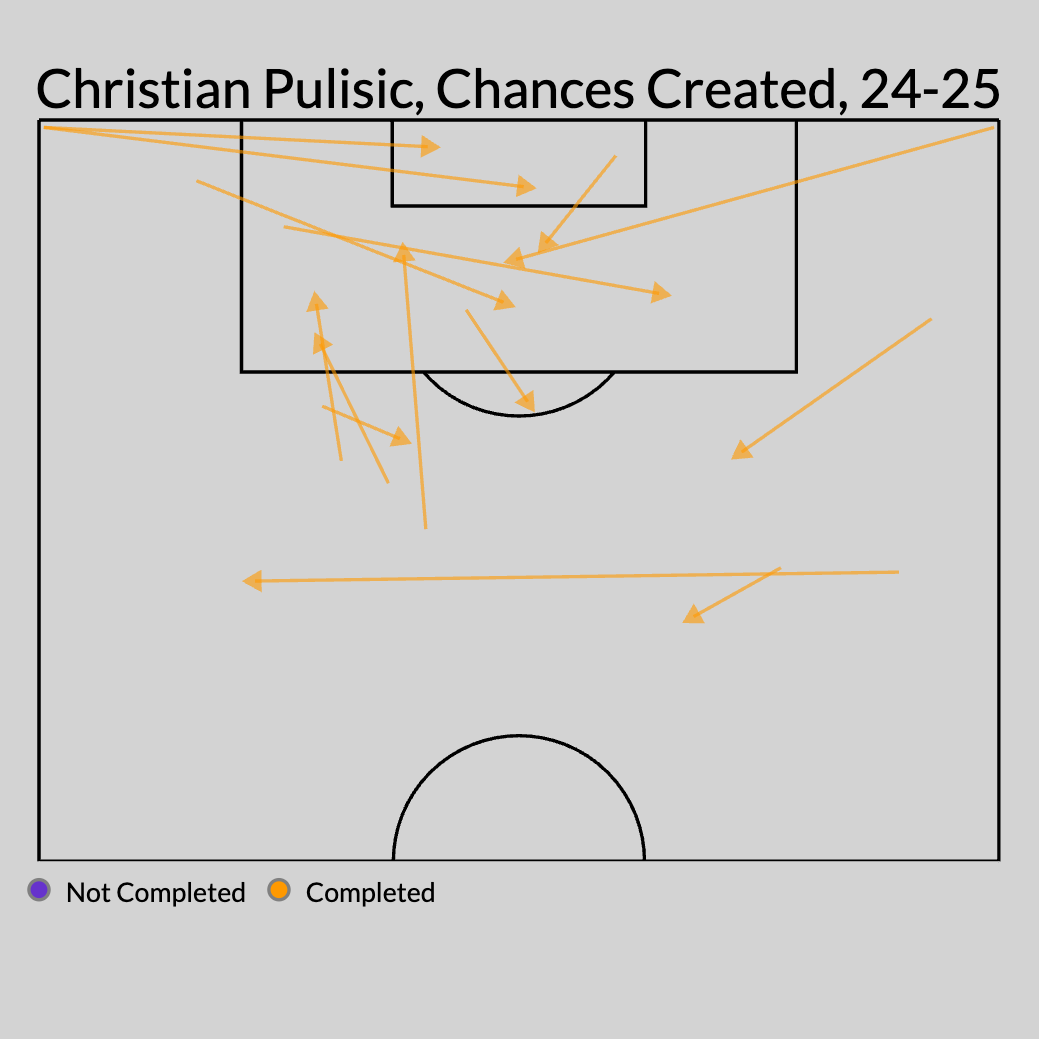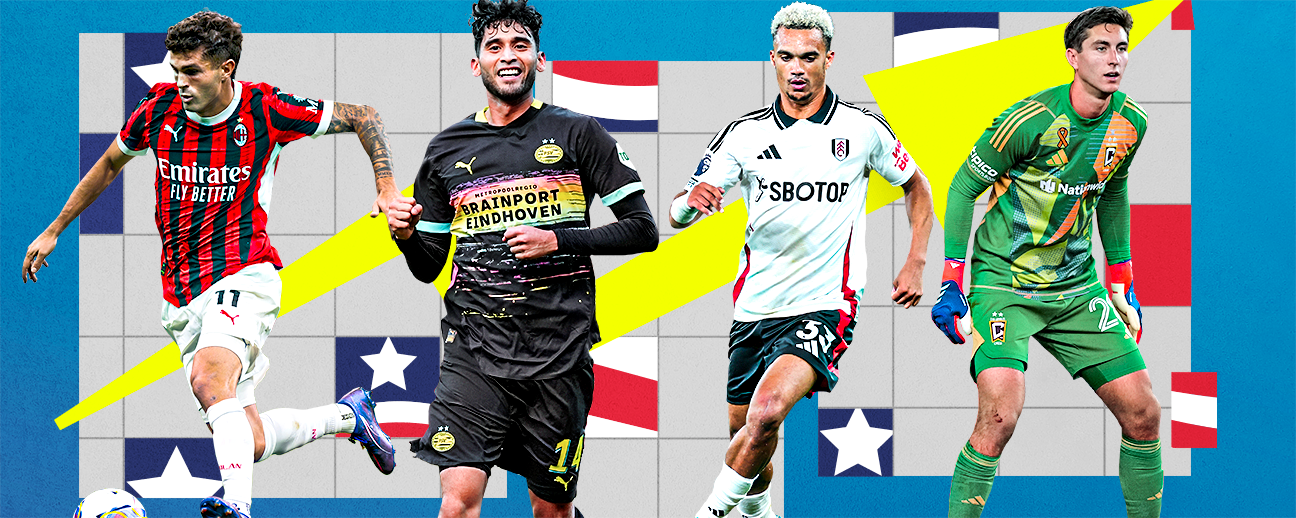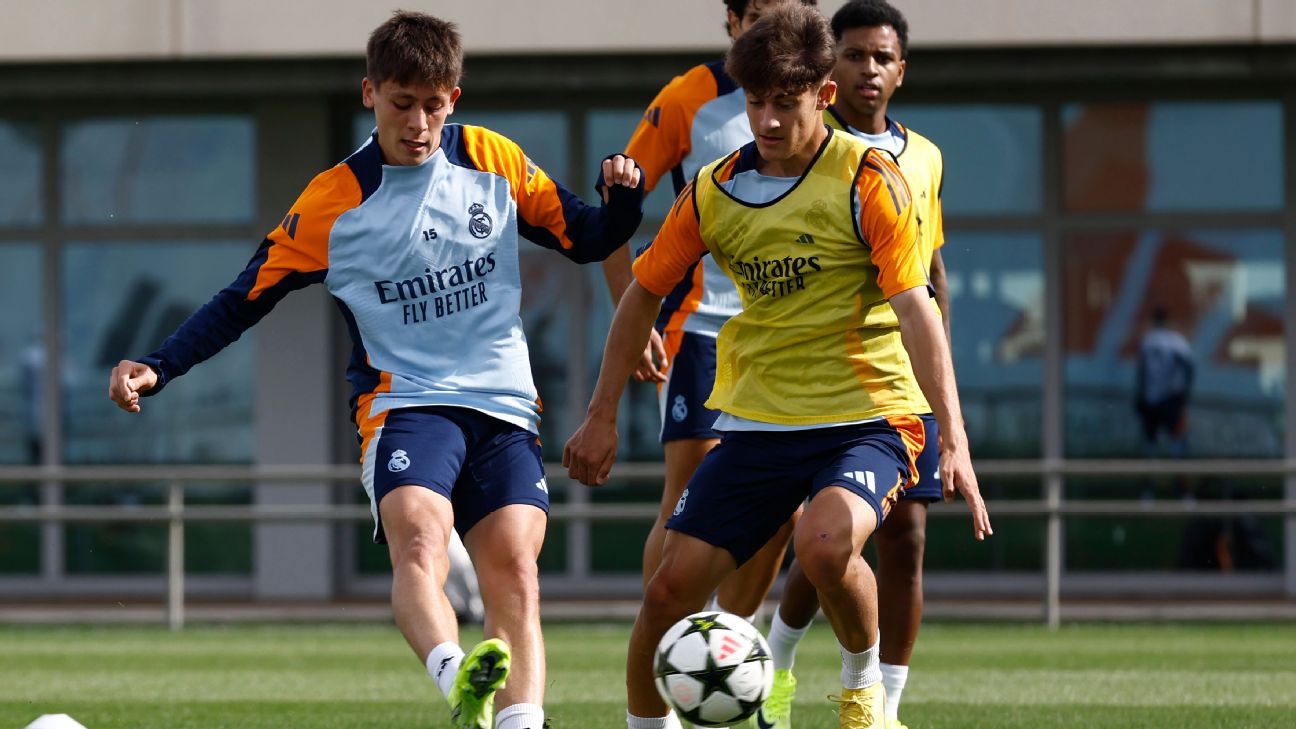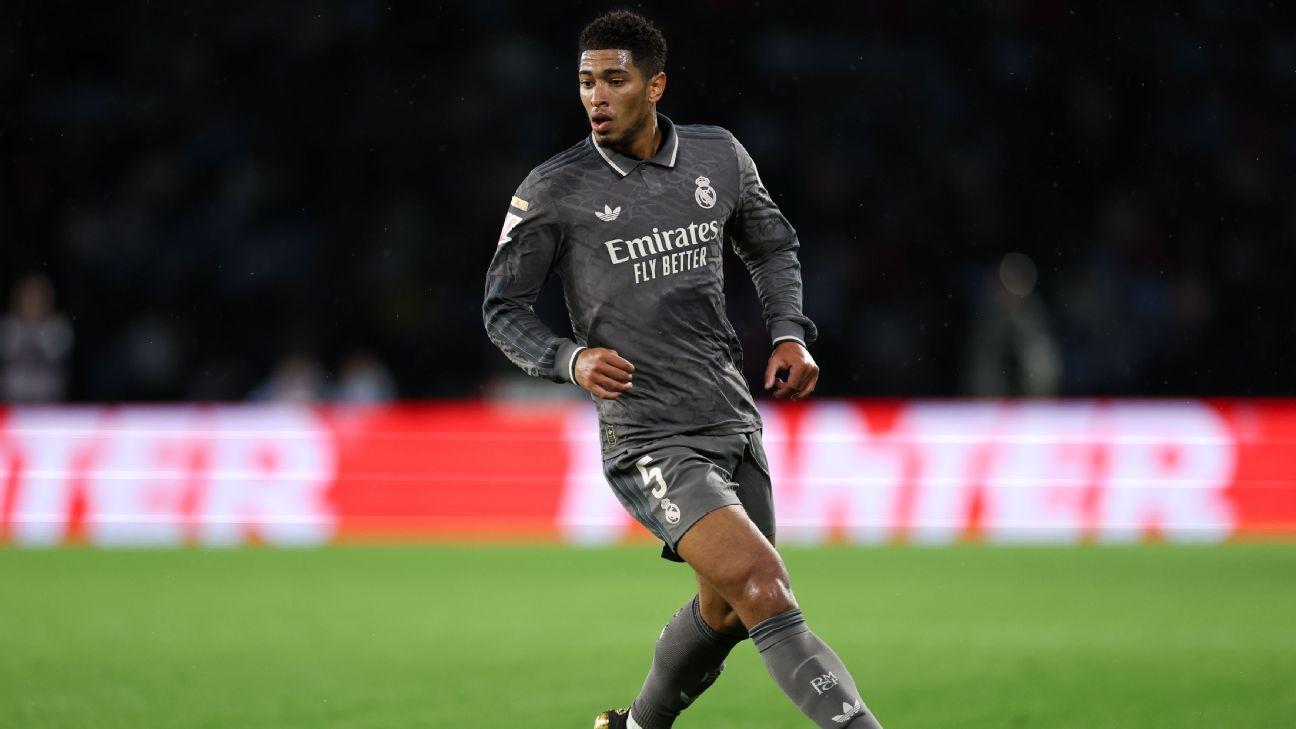ESPN
The moment that all U.S. men’s national team fans have been waiting for is finally here.
After a summer of disappointment and managerial upheaval, we can all rejoice as we sit back and enjoy the first USMNT Player Performance Index of the 2024-25 European soccer season, and the first post-Copa America edition!
Now, you might be slightly more excited for something else coming down the pipeline: the USMNT’s first two matches under their star new manager, Mauricio Pochettino. But before Poch & Co. take on Panama and Mexico in friendlies later this month, we’ve returned with our attempt to rank the best performing players in the entire American player pool.
This index looks at club performance for USMNT players, and we’re still quite early in the season, but this will allow us to track USMNT players as we revisit these rankings periodically throughout the season. Trends will start to emerge, performances will start to solidify, stars will rise and fall, Gio Reyna will inevitably head into another January transfer window in need of a new club, and Tyler Adams — hypothetically, theoretically, spiritually, and perhaps actually — will begin to play professional soccer again.
We’ll get to the top 50 ranking in a minute, but first: some details on the number-crunching that powers these rankings, plus some explanations on notable absences.
Which USMNT players are missing? And how does this ranking work?
Last year, we landed on a methodology that basically asked two questions: How good is a USMNT player’s club team, and how much credit does the player deserve for that?
While there are all kinds of individual statistics out there, each one inevitably misses out on some vital context, and that context varies by position. The statistics we chose for this ranking are no exception, but together they miss out on a lot less than any other methodology we can come up with.
There are no playoffs in European soccer, so every minute you’re not playing is a minute where you’re not helping your team finish higher in the table. If you’re playing a lot of minutes, it likely means your coach thinks you’re playing well. And the better your team is, the more valuable the minutes you’re providing are. Therefore, we designed a model that rewards players who play a lot, and who play for good teams.
First, we need to determine team quality. To compare every team in the world, we’re using Opta’s power-rating database that ranks everyone from Manchester City, the current No. 1, to Estonian club FC Warrior, which sits at 13,230th.
Then, after that, we’d normally make an adjustment based on whether a USMNT player’s club team plays better or worse with him on the field. But there’s one big problem to all of this right now: Most teams, outside of MLS, have barely played any games recently.
We’re just six games into the Premier League season, so there’s plenty of noise and randomness to each player’s playing-time totals right now. A minor injury will wash out over a full season, but it’ll tank a player’s rating in these early-season ratings. Plus, with summer tournaments and the transfer window, some players didn’t get normal preseasons with their clubs, so they’ve missed early matches for reasons that have nothing to do with their form. And on top of that, any on-off splits are basically useless over such a small chunk of games.
So, for these rankings, we’re also including the player’s crowd-sourced market value from Transfermarkt. It’s not a pure representation of player quality for reasons we won’t get into, but you can think of it as basically the soccer-watching world’s general impression of the player. We’ll consider that our “prior” — the general expectation for the player before the season. And since we’re going off so few games, that input will make up 60% of our rating. Then, we’ll give 30% for the quality of the player’s team, and then 10% to the percentage of minutes he has played.
As the season goes on, we’ll decrease the transfer-value rating while increasing the other two — especially the minutes threshold.
Now that you know the formula for this ranking, the three big names who didn’t make the cut are three goalkeepers: Matt Turner, Gaga Slonina and Ethan Horvath. Turner hasn’t played a single minute on loan for Crystal Palace. Slonina has been Barnsley’s starter, but they’re the seventh-placed team in England’s third division — far from a powerhouse. And as for Horvath, he’s played about half of the minutes so far this season for Cardiff City, who are dead last and have conceded the most goals in the Championship.
The formula’s omission that I agree the least with, though: Aidan Morris, who has played about three-quarters of the minutes for Middlesbrough. They’re one of the best teams in the Championship — the second-best expected-goal differential in the league — but they’ve had a bunch of unlucky results so they’re actually rated behind Morris’ old club, the Columbus Crew, in Opta’s ratings. At the very least, he should rise up these charts as the season goes on if he continues to play and if Boro’s results start to line up with their performances. Based on Morris’ roster inclusion for the USMNT’s upcoming friendlies, Pochettino seems to agree.
A couple other call-ups — Standard Liege’s Marlon Fossey and Palermo’s Kristoffer Lund — also missed out on the top 50 because their club teams aren’t very good. But they should slide back in if they continue to play as the season goes on.
OK, enough of that. On to the USMNT Player Performance Index!

![]()
1. Christian Pulisic, right-winger, AC Milan
Yes, friends, I needed several paragraphs of explanation and hundreds of lines of data to come to the conclusion that Pulisic is the best American soccer player. But last year, Pulisic and Weston McKennie were a 1A and 1B of sorts in this index, as both played a ton of minutes for Champions League-quality clubs.
In this current rating system, though, Pulisic rates as far and away the best player. The gap between him and second is about the same size as the gap between second and eighth. And it should be!
While Pulisic stabilized his career last year with Milan and scored 12 goals and added eight assists, he ran quite hot on both the finishing and assisting side. Neither total was sustainable with the same level of underlying performance. This season, though, he is scoring more goals, creating more goals, taking better shots, and creating better chances:

Through six Serie A games, he’s nearly averaging a goal or an assist per 90 minutes. And his expected-goals-plus-expected-assists rate has risen from 0.44 per 90 minutes to 0.75. That’s the difference between a solid squad player and a true Champions League-level star.
![]()
2. Folarin Balogun, striker, Monaco
At just 23, he’s playing about two-thirds of the minutes for the second-best team in France. There’s a lot of noise in xG numbers, or expected goals, at this point in the season because huge chances can skew numbers — but he’s averaging nearly a full expected goal per 90 minutes.

Unfortunately, he has turned that into only about half of an actual goal per 90 minutes. But man, if his finishing ever comes close to matching his shot quantity and quality — and it should! — then he’s going to break out.
![]()
3. Antonee Robinson, left-back, Fulham
The percentage of minutes he’s played for Fulham the past three years:
• 2022-23: 90.3%
• 2023-24: 95.5%
• 2024-25: 100%
Were the 27-year-old Robinson three or four years younger, a bunch of Champions League clubs would be after him.
![]()
4. Weston McKennie, central midfielder, Juventus
In Thiago Motta, has McKennie finally found a Juventus manager who doesn’t trust him?
McKennie has seemingly been rumored to leave Juve every year — especially after a coaching change — and then everyone gets mad that he didn’t leave, and then he inevitably becomes a first-choice player by Halloween. I wouldn’t write it off from happening again, but as of now, he has played only 30% of the Serie A minutes.
![]()
5. Johnny Cardoso, defensive midfielder, Real Betis
It was a good summer for Cardoso (I think?negotiated the ability to eventually purchase his contract in exchange for allowing Giovani Lo Celso to move to Real Betis. At the very least, it’s not a bad sign that one of the biggest clubs in the world saw this kind of value in this kind of agreement for Cardoso.
The only problem, so far, is that he hasn’t played much for Betis: one start and 150 minutes in LaLiga. Most of that is injury-driven, though.
He should find his way back into the lineup more often, and he’d be my pick for the USMNT player who benefits most from the change from Gregg Berhalter to Pochettino.
![]()
6. Malik Tillman, attacking midfielder, PSV
The Opta ratings are quite bullish on PSV Eindhoven — ahead of the likes of Tottenham, Aston Villa and AC Milan. I don’t quite buy that, but Tillman’s individual numbers have been bonkers in the Eredivisie. Look at all the green!
The two things I wanted to see from him this season were: (1) more playing time, and (2) high-level play in the Champions League. We’re getting the first, as he is one of PSV’s most-used players this season. But we haven’t seen the second just yet. He was very quiet in both of PSV’s Champions League matches.
![]()
7. Yunus Musah, central midfielder, AC Milan
He has been way more involved in the attack this season: seven shots already, after only 14 last year. But he’s still mainly just being used as a 25-minute-a-game sub.
I think his breakout performance at the World Cup as an 18-year-old probably fooled a bunch of us about where he might be headed. Or at least how soon he might be headed there. It’s normal for players to struggle to break into a Champions League-level starting lineup at age 21.
![]()
8. Sergiño Dest, right-back, PSV
He’s out until 2025 with a torn ACL, so he’s going to slide down these rankings over the course of the season until he starts playing again. That said, landing at eighth without playing a single minute this season shows how important he is to the USMNT.
![]()
9. Cameron Carter-Vickers, center-back, Celtic
He’s still only 26 — right around the start of the prime for most center-backs — and he’s playing most of the minutes for the dominant team in the Scottish Premiership. They demolished Slovan Bratislava, 5-1, in their first Champions League match, and they easily took down their eternal rivals, Rangers, 3-0 a few weeks before that.
Might Celtic and CCV be rising up the global pecking order? Right as this question seemed worth asking, Carter-Vickers got hurt and then Celtic lost, 7-1, to Borussia Dortmund on Tuesday.
![]()
10. Giovanni Reyna, attacking midfielder, Borussia Dortmund
Sadly, you can apply the same analysis I applied to Dest to Reyna. He’s not out for the year, but he’s already missed some matches due to injury in what seemed like a pivotal season for his career. He’s played in one Bundesliga match so far, for 10 minutes.
How Pochettino views Reyna when healthy will be fascinating. For most serious soccer-playing countries, you don’t get called up to the national team if you’re not playing consistent soccer — especially if that’s been true for five consecutive seasons. At the same time, the highest-end of USMNT performance at the World Cup has to include Reyna in a primary role … right?
![]()
11. Josh Sargent, striker, Norwich City
Sargent hive! We see you. We hear you. And we’ve discussed your concerns.
I didn’t realize we would make so many people mad by having Sargent somewhere in the 30s to 50s in all of the rankings we did last season. But that specific saga easily provoked the most blowback from those of you who read these columns and/or scan the rankings without actually reading any of the words that aren’t in bold letters. So, thanks to him playing nearly every minute for Norwich so far this season, your boy is all the way up to No. 11.
And now for the part where I make everyone mad again. While he’s moved up in the rankings, my opinion hasn’t really changed. Josh Sargent is clearly a very good striker … in England’s second tier, where he has scored more goals in the Championship in 2024 than any other player.
Will he ever be more than that?
![]()
12. Chris Richards, center-back, Crystal Palace
![]()
13. Joe Scally, right-back, Borussia Monchengladbach
I wonder if-and/or-when he’ll move on from Gladbach. He doesn’t turn 22 until the last day of the year, and he’ll be way over 7,000 Bundesliga minutes by the time he gets there. For comparison: Reyna is about a month older than Scally, and he’ll be lucky to break 4,000 minutes before his 22nd birthday.
There’s nothing spectacular about Scally, but defenders his age rarely rack up this many quality minutes.
![]()
14. Brenden Aaronson, midfielder, Leeds United
![]()
15. Tyler Adams, defensive midfielder, AFC Bournemouth
In his news conference ahead of Monday’s 3-0 win over Southampton, Bournemouth manager Andoni Iraola said the following: “Everyone is available, apart from Tyler Adams.”
Yep! That just about says it all. Since joining Bournemouth last summer, Adams has started one match and played 140 minutes of Premier League soccer.
![]()
16. Timothy Weah, winger, Juventus
![]()
17. Ricardo Pepi, striker, PSV
While Pepi still hasn’t become a starter at PSV, he’s at least seeing a little more game time. He played 484 league minutes last season, and he’s already up to 220 through the first month and a half of this year.
![]()
18. Rokas Pukstas, attacking midfielder, Hajduk Split
The USMNT PPI darling: He plays a lot for a decent team and wasn’t released to play in the Olympics by Hajduk Split.
Pukstas only turned 20 in August, and he’s once again a first-choice player for one of the best teams in Croatia. After a ton of rumors connecting him to clubs in Europe’s “Big Five” top leagues, it seems like it’s only a matter of time before he’s playing for a much bigger club.
![]()
19. Brandon Vázquez, striker, Monterrey
![]()
20. Jordan Morris, left-winger, Seattle Sounders
He’s played 91% of the minutes for one of the better teams in MLS — at a position where players get subbed off frequently. I don’t think there’s much of a path back into the USMNT fold at his age, but 29-year-old Morris has put together a really impressive season.
![]()
21. Mark McKenzie, center-back, Toulouse
![]()
22. Haji Wright, left-winger, Coventry City
Same thing as Josh Sargent — except his fans aren’t as angry on the internet and he’s two years older.
![]()
23. Cristian Roldan, central midfielder, Seattle Sounders
![]()
24. Lennard Maloney, defensive midfielder, Heidenheim
![]()
25. Patrick Schulte, goalkeeper, Columbus Crew SC
The Opta power rankings view the Crew as the 63rd-best team in the world — or, better than Bournemouth, who just gave both Liverpool and Chelsea a real run for their money. I wouldn’t go that far, but they did take down two Mexican sides in the CONCACAF Champions League — and MLS teams typically get punished in any of these kinds of power-ranking models because there’s almost no evidence of MLS teams being able to defeat teams from other similarly rated leagues.
Anyway, Schulte has been a really good shot-stopper this season, at just 22 years old. The USMNT goalkeeper situation is a complete mess, so maybe he can find a way to sneak into the starting role at some point. His inclusion in Pochettino’s first squad suggests he has a shot.
![]()
26. Caleb Wiley, left-back, Strasbourg
![]()
27. Gianluca Busio, midfielder, Venezia
![]()
28. Miles Robinson, center-back, FC Cincinnati
![]()
29. Jordan Pefok, forward, Union Berlin
He’s not producing all that much offensively, but he has played three-quarters of the minutes for the ninth-place team in Germany. If you squint hard enough, you can see a Kai Havertz-ish-shaped player: great defensive output for the position, decent ball retention, some chance creation for his teammates, and not much goal-scoring.
Could that be interesting for Pochettino? His first roster suggests: probably not.
![]()
30. Diego Luna, left-midfield, Real Salt Lake
![]()
31. Quinn Sullivan, midfielder, Philadelphia Union
![]()
32. Auston Trusty, center-back, Celtic
![]()
33. Jack McGlynn, central midfield, Philadelphia Union
![]()
34. Tanner Tessmann, midfielder, Lyon
I remain bullish on Tessmann’s USMNT prospects, but slightly less bullish than I was a couple months ago. After moving to Lyon in the summer, he has played just 73 total league minutes.
Soccer will not have officially made it in America until Tessmann (born in Birmingham, Alabama) and Pukstas (born in Stillwater, Oklahoma) share a midfield together.
![]()
35. Drake Callender, goalkeeper, Inter Miami
![]()
36. Duncan McGuire, striker, Orlando City
Duncan McGuire finds the back of the net just 14 seconds into the game to give Orlando City an early lead over Minnesota United.
![]()
37. Keaton Parks, defensive midfielder, New York City FC
![]()
38. Julian Gressel, right-winger, Inter Miami
Julian Gressel nails the volley to bring Inter Miami level against the Philadelphia Union.
![]()
39. Cole Bassett, attacking midfield, Colorado Rapids
![]()
40. Paul Arriola, right-winger, FC Dallas
Logan Farrington feeds Paul Arriola in the center of the box for a short goal for Dallas.
![]()
41. John Tolkin, left-back, New York Red Bulls
![]()
42. Bryan Reynolds, right-back, Westerlo
It’s a big drop-off for a dude who was starting matches for AS Roma at 17, but he’s playing more and more for a Westerlo team that keeps getting better and better while his attacking numbers continue to improve.
![]()
43. Brooks Lennon, right-back, Atlanta United
![]()
44. James Sands, defensive midfield, New York City FC
Lionel Messi’s Inter Miami thought they had clinched a 1-0 win on the road until James Sands’ header in the dying seconds.
![]()
45. Jackson Ragen, center-back, Seattle Sounders
![]()
46. Timothy Tillman, central midfield, LAFC
![]()
47. Zack Steffen, goalkeeper, Colorado Rapids
He continues to struggle to stop shots, but he’s succeeding at something that none of the USMNT’s other recent starters in goal have done: consistently playing professional soccer. That was enough for Pochettino to decide to bring him back into the fold.
![]()
48. Kevin Paredes, left-midfield, Wolfsburg
After leading the U.S. in goals and assists at the Olympics, Paredes rode that momentum into the club season and … immediately injured his foot. He has yet to play a single minute for Wolfsburg this season.
![]()
49. Jesús Ferreira, striker, FC Dallas
![]()
50. Darlington Nagbe, central midfield, Columbus Crew SC
I don’t know who this is for, but: Mauricio Pochettino has his very own American Harry Winks if he can convince Nagbe to come back to the USMNT.



